When we at NYSH were asked to make a special presentation for Hpathy.com, I knew exactly what the theme of this issue should be; how to teach Classical Homeopathy in the 21st Century, based on the work of Hahnemann and the old masters while embracing the exciting and innovative methods of today. Homeopathic fundamentalists might ask “Why would we want to move beyond the amazing work of Hahnemann and his contemporaries when it has stood the test of time?” On the other hand, some ultra progressive homeopaths might ask “Why bother learning all that stuff from the classical homeopaths when we have improved on their methods?”
At NYSH, our answer is that we need to use knowledge from both the classics and the moderns if we are to profoundly cure our patients. Fundamentalism in any field or religion is frightening to me. It insists that we stand still and not move forward. I am pretty sure that the great innovator, Samuel Hahnemann would have been the last person to suggest that we should stop progressing. I think he would be the first to embrace any ideas or methods that would help him find the simillimum. His quest was “to cure, as it is termed”. And if we were foolish enough to try to limit our information, where would we choose to stop anyway? Should we only use the remedies that Hahnemann proved, or should we also include Kent’s and Hering’s proving? Or maybe we should include all the work until say… 1920? Stopping anywhere makes no sense. Learning must go on and information and knowledge cannot be limited. Besides, our world is so much more complex than it was in the 19th century, therefore we need more remedies and more ways of finding the required remedy than ever before.
But, should we discard the old teachings and the repertories because we have discovered some newer and perhaps easier ways of finding the true simillimum? Of course not. Anyone who tries to learn and then practice homeopathy that way will be doing a disservice to themselves and to all of their patients. We all must get a good foundation in Classical Homeopathy and add to that the new information and techniques as they are proven to be useful.
This blending of the old and the new can be difficult for the homeopathic schools of today. There is so much information to teach and so little time, but I think at NYSH we have struck a pretty good balance.
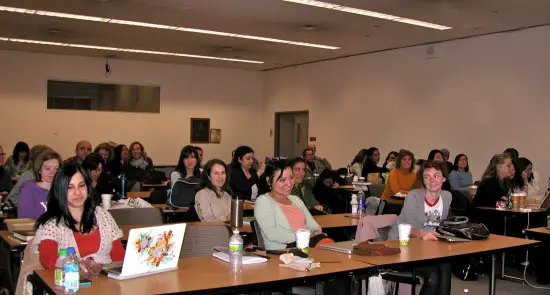
We spend much of the time in the first two years of our school studying the classics and the well known polychrests. Yet even from the beginning, new homeopathic ideas are introduced. For instance, Phosphorus, Sepia and Lycopodium are not simply random polychrests with lots of symptoms to memorize, they are remedies that belong to the three kingdoms in nature. Understanding remedies as members of the mineral, plant, and animal kingdoms is helpful from the start; it helps a new student understand the remedy as part of a grouping, instead of just being “Phosphorus” or “Sepia”.
At NYSH each level of study meets one weekend a month, ten months a year, for four years. In the first and second years of study, every Saturday morning is dedicated to Organon discussions; the students bring in thoughtful questions on their Organon reading from the month before. In addition to the Organon, we work with Kent’s Lectures on Homeopathic Philosophy in class. There is an extensive booklist that the students receive and it includes the many of the classic texts as well as many of the new books. Rajan Sankaran’s The Other Song is suggested reading alongside books by Hahnemann, Kent, Roberts, Close, Clarke, Morrison, Tyler, Boericke, Shephard, Gibson, Vermulen, and many others.
In the first year we begin with homeopathic philosophy and the most famous polychrests. From the beginning, I explain the difference between homeopathic principles such as the “Law of Similars” as opposed to rules or opinions such as “use higher potencies for emotional or mental pathology”. I emphasize how important it is to have the right intention, or “high ideals” as Hahnemann would put it. It is important for the students to be reminded that to work with homeopathy is a higher calling, and if one is hoping for fame or money, their success will be limited. Searching for the cure must be the intention every time.
When studying the polychrests, right from the start, I arrange remedies for homework and class study so they represent a range from the kingdoms of nature. This helps me begin the discussion of kingdoms right from the beginning. As the year progresses, we also study Hahnemann’s miasms and the most famous miasmatic remedies. I introduce the idea that the tubercular miasm had been added soon after Hahnemann’s death and that Rajan Sankaran has now expanded our understanding to ten miasms. The emphasis in the first year is on Hahnemann’s work and his book Chronic Disease, but the idea of an expanded miasm chart is introduced, and will be dealt with more extensively in the following years of study.
In the first year we begin our study of the mineral kingdom in March. At the same time each year, all of the other levels of students at NYSH get involved in a deeper study the mineral kingdom. Ever since Jan Scholten and Rajan Sankaran made the periodic table more accessible, we have been spending 2-3 months on the study of mineral remedies every year. In the first year I offer an understanding of the periodic table as a whole (homeopathically) with an emphasis on the famous mineral kingdom polychrests. It is at this time that I first mention lesser known remedies like the halogens and noble gases, but it is the famous polychrest remedies that we study in depth. The 2nd, 3rd, and 4th year students re-study the periodic table each year and as one progresses in the school, the emphasis is more and more on the lesser known remedies and extends into the radioactive elements and the Lanthanides.
This should not be misunderstood as an over emphasis on the mineral kingdom. We also study plant families as groups with common characteristics, and animal groupings in the same way. It’s just that somehow, late winter/early spring has become the time of year for the study of minerals.
Homework is a big part of the training at NYSH. Each month the students are asked to read from the Organon and other classic texts, and then read about the assigned remedies in as many texts as possible. Now that there is so much information online, this task is a bit easier than it used to be. They must write up the remedy pictures using prose to describe the feeling of the remedy followed by a list of big ideas and important and keynote symptoms. The homework is due when we meet the following month and we spend time in class working together to broaden and fill out the remedy pictures that they have already written on their own.
The way we work in class is mostly with big ideas. In fact we make a kind of circle/ spider graph with the biggest idea in the center of that graph; the idea from whence all the other ideas/symptoms occur.
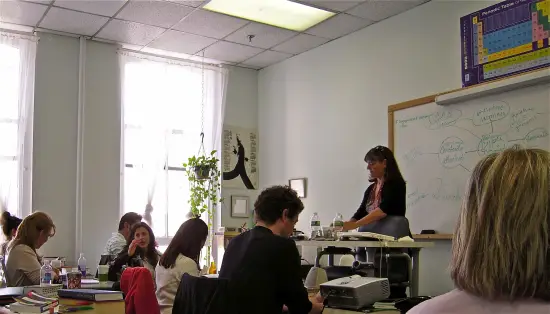
For instance, in the center of the circle/spider graph for Calcarea carbonica is the main idea of a “need for security and protection”. All of the other ideas and symptoms come out of that need, ie. “overworking” (in order to feel secure about one’s job and finances), which then leads to the famous feeling of being “overwhelmed”. The famous fears of Calcarea carbonicum also come off of the center idea because it is easy to understand how “fear of the dark”, “fear of change” and even “fear of going insane or being observed as insane” come out of the core need for security and protection. Keynotes like “loves eggs” or “head sweats at night” are listed off to the side with an asterisk* so the students know that these symptoms simply need to be memorized.
We make these circle/spider graphs for almost every remedy that is studied in the first year and for many in the second year. In the clinic class we sometimes turn that idea around and make a circle/spider graph about the patient. If the students can understand the core issue of the patient from which all of the other problems arise, it will be easier for them to select the correct remedy. I think homeopaths are all sort of doing an unconscious “circle/spider graph” whenever we take a case, but sometimes it is necessary for students to literally go through that exercise. Going both ways with this kind of work helps the students understand why one prescribes a particular remedy for a certain patient, instead of simply basing the prescription on a strict repertorization or a few matching keynotes.
The repertory is an amazing tool, where would we be without it? But it does have its limitations. For one thing, it takes a while for symptoms from new provings to be entered and therefore many new remedies are not represented. But there also exists the problem of incorrect entries- remedies that were listed under a symptom because one homeopath may have seen that reaction in a patient (whether or not that reaction was due to the remedy). I have heard another teacher say that it is like a telephone book- very useful but incorrect as far as including anyone who has moved away, or moved to town, since the last printing.
A bigger problem with repertory work is the fact that the polychrests are very much over represented and it looks as if we should only be prescribing those remedies. I think the repertory is one of the reasons for a more fundamentalist approach to homeopathy. The repertory indeed makes it look like we only need 50 remedies to work with. It is difficult to arrive at a precisely well chosen remedy if we only use the repertory. However, combining the repertory with investigation into kingdom and groupings, along with the big ideas/themes of the patient and the remedy, can be a very effective way to work. No tool should be used exclusively.
From the 2nd year forward we study remedies in groupings such as the insects, spiders, snakes, acids, nosodes, sarcodes, sea remedies, various plant families and so on. We study the well known symptoms that remedies in these groupings share in common, and then we learn the differentiating symptoms of the individual remedies in that grouping. Most of what I teach in this area is based on my own ideas along with the groupings work of Dr. Massimo Mangialavori and other homeopaths of our time. The idea behind working with groupings is simple; if you can understand which kingdom a patient belongs to, and then understand the grouping he/she belongs to based on the shared symptomology of that grouping, then one can look at the differentiating symptoms and keynotes of the individual remedies in that grouping, in order to select the correct remedy. For instance, if a patient is speaking the language of the animal kingdom (speaking of survival issues on many levels), and then reports having many of the common symptoms of the snake grouping (like jealousy, high blood pressure, heat flashes, etc), then instead of simply prescribing Lachesis for every patient who has snake symptomology, you can consider a differentiating symptom like “dreams of rape”, and correctly prescribe Cenchris instead, since that information came from directly from the proving. It is probable that the patient might have gotten some relief from Lachesis, but if Cenchris is the correct remedy, there will be a more profound and lasting response.
(for more info please see the article “Why we Study Groupings” by Bara Jones)
Once a student joins the student clinic in the 3rd year of study, he/she begins applying this didactic information to real patients. Every Saturday we see one or two new patients. A student homeopath is assigned and takes the case with me as the back-up homeopath. On Saturday night after the clinic class the students must write up one of the cases, selecting a remedy and defending their choice. On Sunday morning we see numerous follow ups and then on Sunday afternoon, we discuss, explain, argue, and finally select a remedy and potency for each patient that has been seen on Saturday. The student who took the case is also in charge of patient management. Case management decisions are made through a group email system with my input and supervision.
(The clinic at the New York School of Homeopathy operates on a pro bono basis. The patient signs a waiver allowing us to use the video for teaching purposes. This is such a great service to the homeopathic community that we feel it is adequate payment for services rendered.)
During the interview I allow the student homeopath to use the case taking method he/she feels most comfortable with. When the student has finished his/her own line of questioning, I often take over. Of course, as students get more and more proficient, my participation in the interview process becomes less and less necessary. When I do take over the interview, I usually take the case in a Sensation System style. I use the various techniques that I have mostly learned from Dr. Rajan Sankaran, Dr. Paresh Vasani, and Dr. Divya Chhabra. Using these techniques I am hoping to bring the patient to the “experience” of his/her problem, and I am hoping that when the patient fully expresses the “experience”, the source of the precise remedy will be revealed. In clinic, we find that most patients are ready, able and willing to go to this “experience” or “source” level, and when they do, the response to the remedy is profound and lasting. Our favorite patients are the ones who are able to reveal the “source” or “experience” of a well known remedy because in these cases we are able to see that the repertory (or materia medica) information provided by the patient matches the “source” information. These cases help confirm the usefulness of the Sensation System.
(Please see the case of “I Live In My Mind” as an example.)
From the beginning of study at NYSH, Rajan Sankaran’s Sensation System of Homeopathy is discussed. This discussion gets deeper as the student progresses in the school. NYSH has sponsored seminars with Dr. Sankaran three times in the last ten years, and since 2008 we have held an annual special seminar with Dr. Paresh Vasani who works closely with Dr. Sankaran.
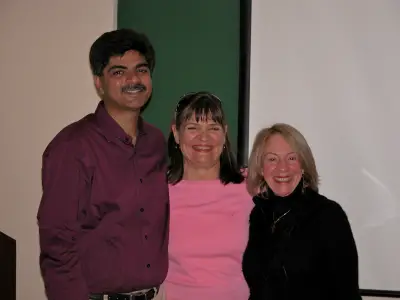
Paresh’s seminars are clinical workshops so students can watch the Sensation System at work. Because he returns each year, the students and other attendees are able to watch the progress of the patients, for better or worse. This is an important feature of these annual workshops because it is rare for seminar attendees to be able see the results of live case taking, year after year. In addition, I attend an annual seminar given by Dr. Divya Chhabra who has developed very useful techniques that bring the patient to the “experience” by avoiding thinking or theorizing and exploring their own sensory reactions instead.
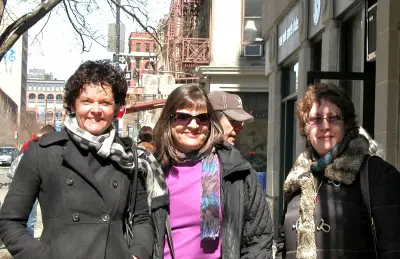
All of this work at NYSH is blended with the study of and practice with the repertory and the study of acute prescribing. Repertory work is mandatory at NYSH and the students are tested on repertory at mid-term and final exams each year. In the clinic, students are allowed to analyze the case with whatever system they prefer to use; repertory, big ideas and groupings (which is actually an extension of repertory work), Sensation System, or the analysis style of their choice. But it is crucial for everyone to learn the repertory so they can use it when that is the proper tool to use. In some cases the patient cannot go to the “experience” or the “source”, and so using symptoms which can be repertorized, combined with big ideas, can sometimes be the only way to prescribe a remedy.
(Please see the case “I Think I Was Born Married” as an example.)
At NYSH, we have sometimes been unfairly criticized for working “solely” with the Sensation System. This is obviously not true, and I assume this criticism comes from critics with a more fundamentalist view of homeopathic education, along with a certain amount of envy of the success of the Sensation Homeopaths. We use the Sensation System when it is appropriate to do so, and we use other methods when necessary. We believe that students need to learn all methods of case taking and analysis in order to be prepared for working with real, live, patients. I find it unfortunate when information is withheld from students of homeopathy in the name of “Classical Homeopathy”. As I said before, I am certain that Hahnemann would be embracing the innovative work of Jan Scholten, Massimo Mangialavori, Rajan Sankaran, Paresh Vasani, Jayesh Shah, and Divya Chhabra, to name a few. This new work is being offered to all of us to be used towards finding the true simillimum or “to cure as it is termed”. The medical art of homeopathy and homeopathic education should always be growing larger, not smaller, and needs to be expansive in scope, never restrictive.
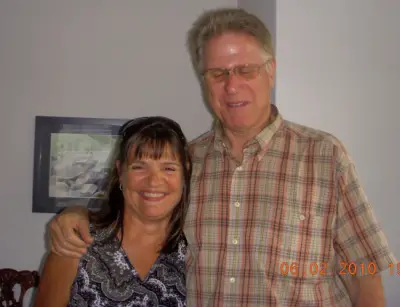
(Addendum: The cases that follow in this issue are all from the student clinic at the New York School of Homeopathy. They were chosen because they represent successful cases that have used various methods of case taking and analysis, but the patient in each case has had a profound response. In addition to our clinic cases is a Sensation case from Dr. Paresh Vasani of Mumbai, India.)


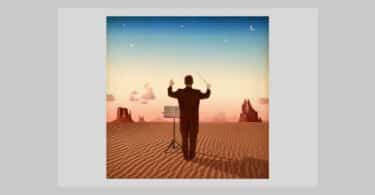
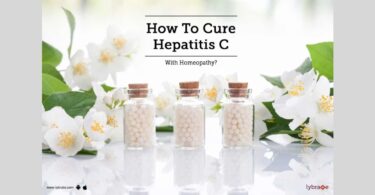
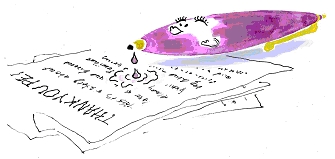
I must take issue with Ms Sonz over the “limitation” of the repertory, and the apparent lack of education of her students to the Sehgal method of Revolutionized Homoeopathy. Dr Sehgal was Sankharan’s teacher and should never be overlooked. With this method one takes the present, predominating and persisting symptoms of the patient rather than strange, rare and peculiar to find the mental state of the patient during illness. The Mind section only is used and the results are good…..no Ms Sonz. no envy there at all.
The new provings are all very well but they are being put into the repertory by people who do not fully understand the meanings of the words in the rubrics, hence rubrics are changed or grouped together and loose their meanings…this is what makes the repertory inacurate. There is an element here of dumbing down homoeopathy, rather than it being an art and a science. I use an older repertory for this reason.
It is true that I use a smaller number of remedies than those who choose to use the sensation method, but if my patient is cured what does it matter, after all that is what I became a homoeopath for.
I am an homoeopathic practitioner and my daughter is in New Jersey. I just want to know what is total cost ($) needed to pass out your course, and is it legally permissible to practice there.
thank you
Bharat
I am Favourit of Homoeopathy and use homoeo medicines.My son is in Pikerington,Ohio,U.S.A.He also uses Homoeo medicines.My grand daugnhter aged 16 years requirs treatment for ADD.I want to have the address and phone numbers of the contact persons name at NYSH to enable her treatment.
Can I get the Address of The NewyORK school of Homeopathy?
this is very creative site.this is helpfull for dr&students.
For P.S.U. Sarma and Bharat Bhushan Ji:
I am a student of NYSH. You can go to the website: http://www.nyhomeopathy.com/ for the contact details and curriculum.
Thank you
I am involved with classical homeopathy. I really benefit a lot from
this article. Thanks NYSH.
This is a good news, a homoeopathic college in New york. From Hahnemann onwards there were many many new thoughts in homoeopathy like of Boenninghusen,Kent,Boger, Burnett, Vithoulkas,Sankaran,Praful Vijaykar etc, etc.
In my opinion Homoeopathy cannot depend upon one sensation or delusion or on imaginary Materia Medica.The students or the new homeopath should at first master the basic philosophies and MM of our old authors .After they got the base they can go for new thoughts. Hahnemann’s organon was built upon rocks of real fact (years of observation and clinical study) and our old materia medicas are from real proving. So there is an authenticity and it will last no doubt. If we the new homeopaths solely depend upon one method the chance of failure is more and will end in dejection. When we read Organon we can see about complete symptom, accessorry symptoms (Boeninghausen’s method depends on this),mental state,(Kent and new generation homeopaths),uncommon peculiar symptoms (key note symptoms),whole patient(casetaking aphorisms),like wise many ,many ideas.If we depend only on any of the one method ,our capability also limited.So the patient may benefit from complete case taking, or from his mental state or from some physical peculiarities
Second point
The three things essential for a physicain(aph-77?)
Knowledge of medicine, Knowledge of disease, and knowledge of how to apply them
So there should be thorough knowledge of Anatomy,Physiology,pathology,microbilogy,Practice of medicine etc
regards
wonderful ideas logically presented.Every physician needs to be open minded. And here are his words I like most:
“Stopping anywhere makes no sense. Learning must go on and information and knowledge cannot be limited. Besides, our world is so much more complex than it was in the 19th century, therefore we need more remedies and more ways of finding the required remedy than ever before. “
I just loved reading your article. it is very important nowadays to keep Homeopathy students in an open mind state. It is critical to keep evolving Homeopathy and move on to the next level, just like Jan Scholten, Rajan Sankaran, Massimo Mangliavori and many other great Homeopaths did in the last two decades.
Working with many case taking methods could be the difference between a good Homeopathic treatment and a bad one. Making this knowledge wider, makes a better future for Homeopaths and practitioners.
I think such insights which combine old methodology with the new one, represent the right path for a more successful Homeopathic treatment, and therefore I am proud of such way of thinking and teaching.
You guys are doing very well and it makes me proud of you.
keep on doing such a great job
all the best
Avishay